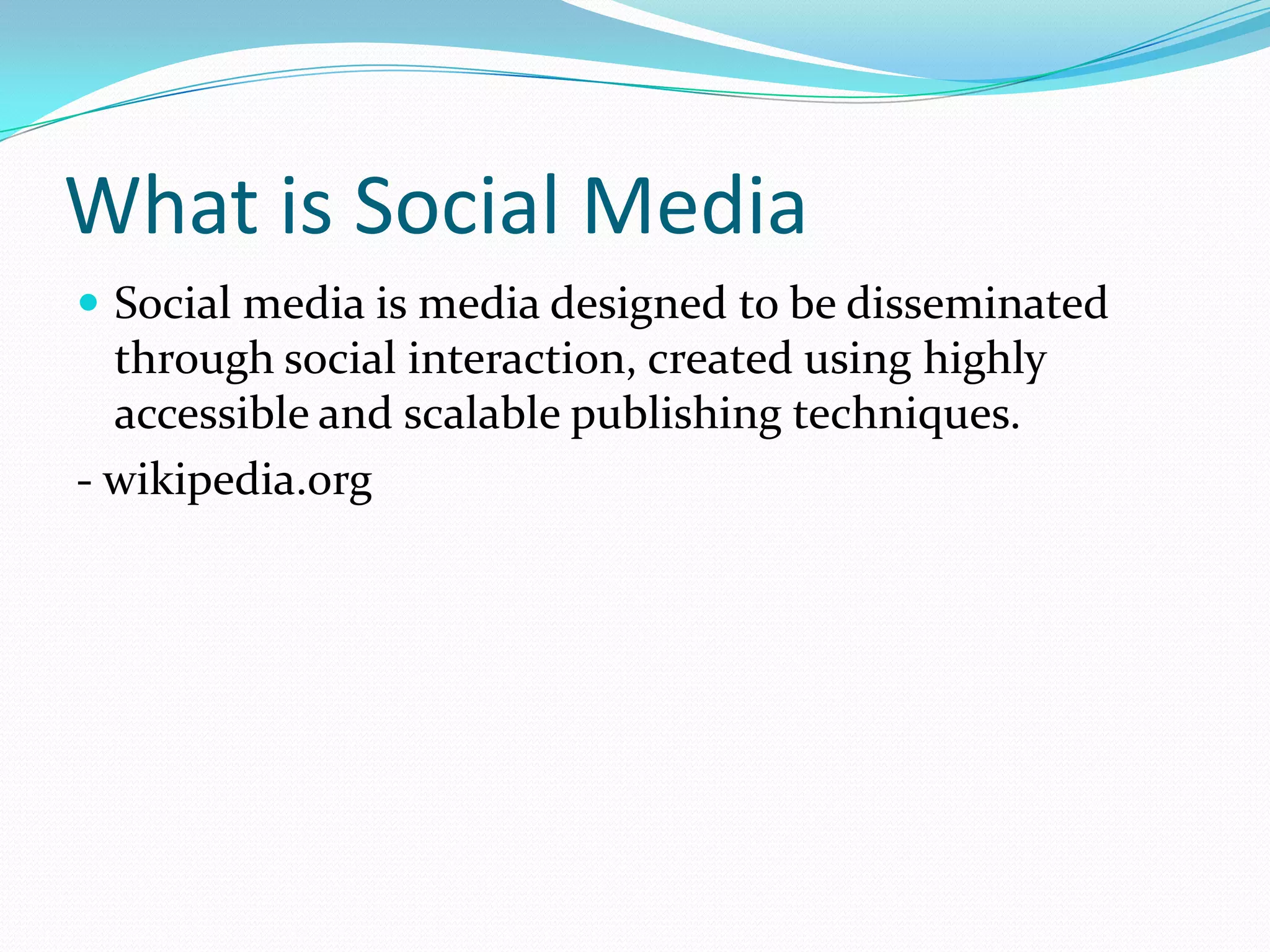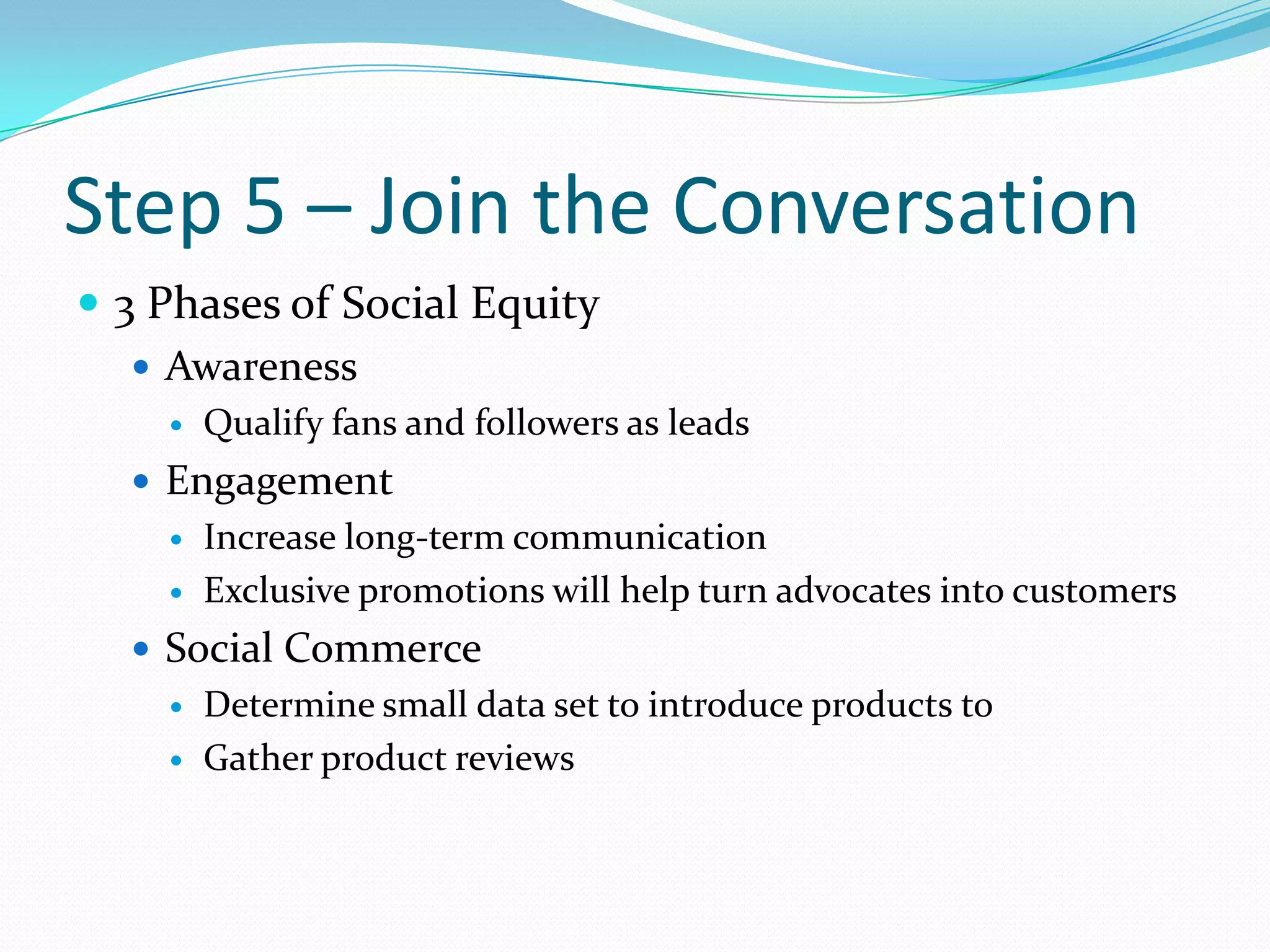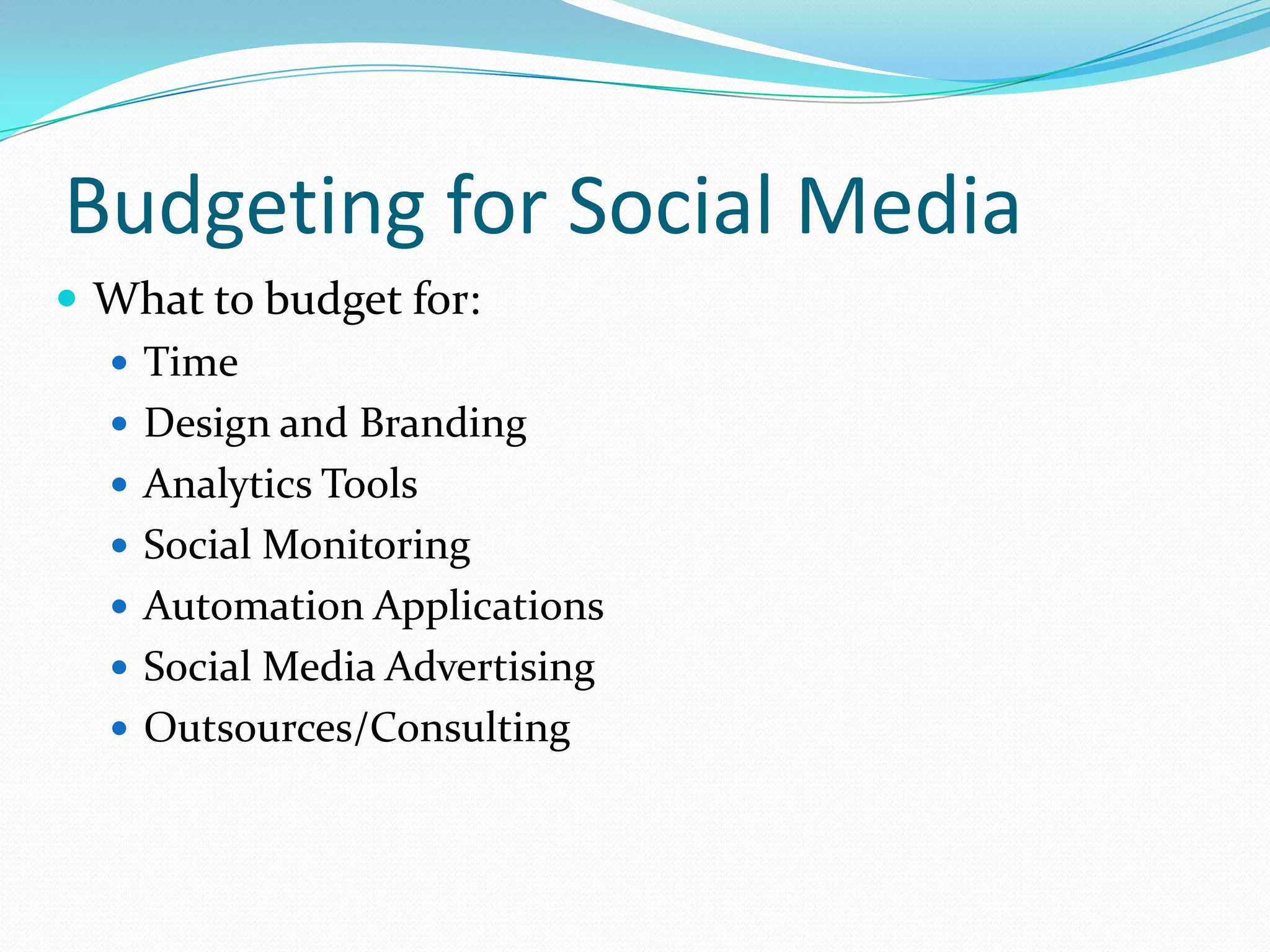The document provides guidance on creating an effective social media plan in 6 steps: 1) Preplanning to understand customer needs and behaviors, 2) Listening to online conversations, 3) Creating target profiles, 4) Setting goals, 5) Joining conversations strategically, and 6) Measuring returns both qualitatively and quantitatively. It emphasizes the importance of transparency, engagement, expertise, and consistency across social media channels to build relationships and trust over the long-term. Budgets should allocate for both time and tools to automate processes and measure analytics and returns on investment.


































